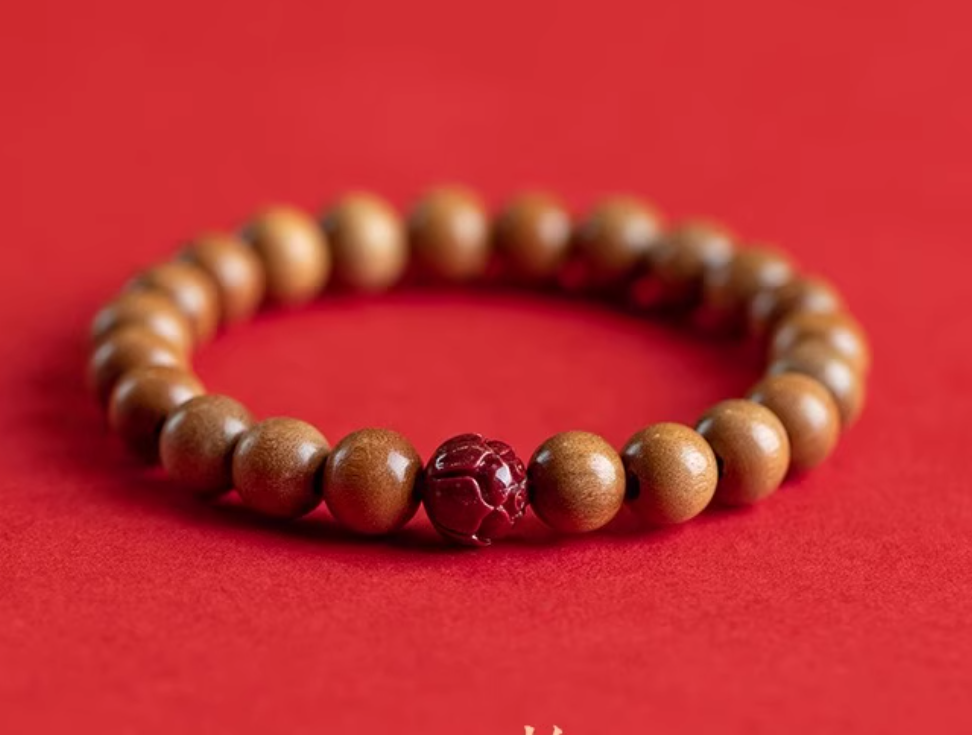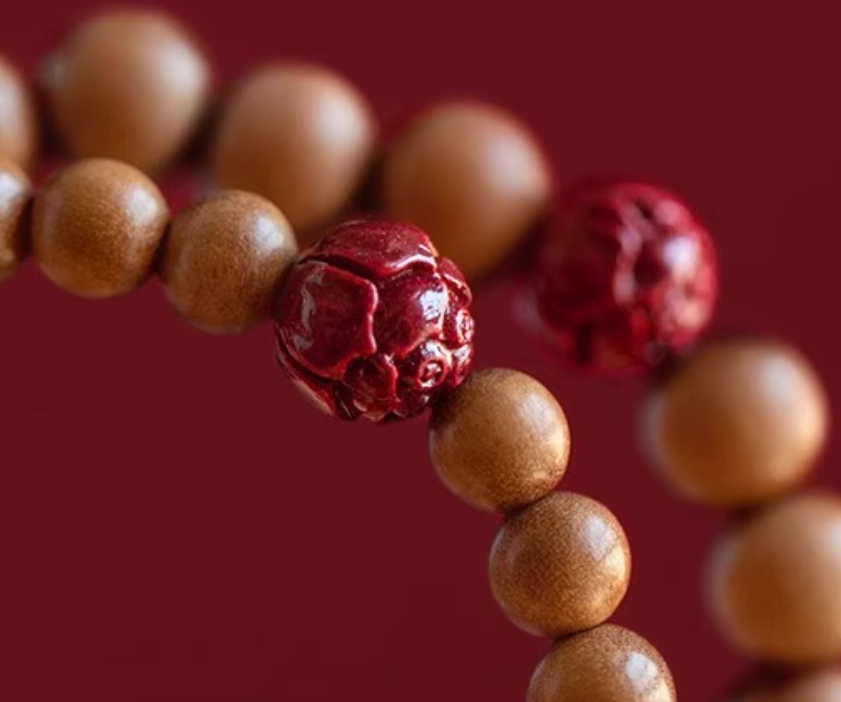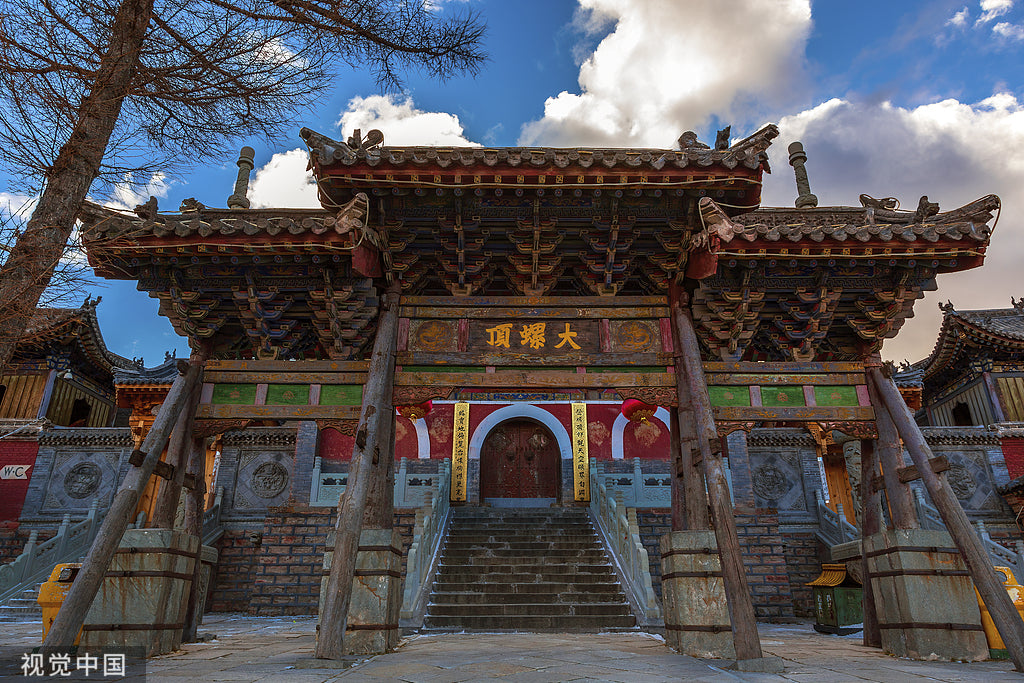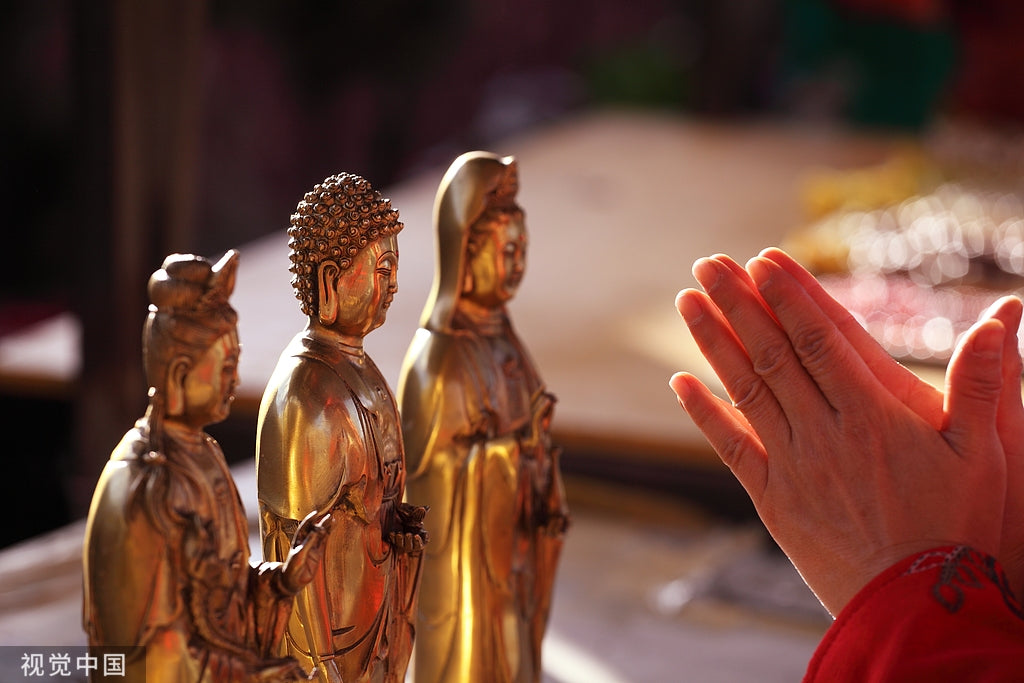The peach wood bracelet consecrated by a master comes from Mount Wutai.
The peach wood bracelet consecrated by a master comes from Mount Wutai.
Impossibile caricare la disponibilità di ritiro
In Chinese culture, peach wood is believed to ward off evil spirits, a belief originating from the ancient text Shan Hai Jing. According to the records, there is a massive peach tree spanning three thousand miles on Mount Dushuo in the East Sea. The "Ghost Gate" in the northeast of the tree is the passage through which countless ghosts come and go. The Heavenly Emperor appointed the gods Shentu and Yulei to guard this gate, binding evil ghosts with peach branches and feeding them to tigers. Following this example, the Yellow Emperor instructed the people to "erect large peach wood figures" or carve the names of these two gods on peach wood boards to hang on doors, causing malevolent spirits to retreat. This practice is the origin of the later "peach talismans." This peach wood bracelet has been consecrated by a master from Mount Wutai, and wearing it long-term ensures peace and protection.
Key Features
Key Features
Return Policy
Return Policy
We have a 30-day return policy, which means you have 30 days after receiving your item to request a return.
To be eligible for a return, your item must be in the same condition that you received it, unworn or unused, with tags, and in its original packaging. You’ll also need the receipt or proof of purchase.
Share




Located in northeastern Shanxi Province, Mount Wutai is the foremost of China's Four Sacred Buddhist Mountains and is revered as the bodhimaṇḍa of Mañjuśrī. Named after its five flat peaks, with the highest reaching 3,061 meters, it's known as the "Roof of North China."

The site preserves 47 temples, including the Tang Dynasty Foguang Temple and Yuan Dynasty White Pagoda, showcasing a unique blend of Han and Tibetan Buddhism. Inscribed as a UNESCO World Heritage Site in 2009, it integrates religious significance with natural landscapes, ancient architecture, and Buddhist culture, making it a premier pilgrimage and tourism destination.



